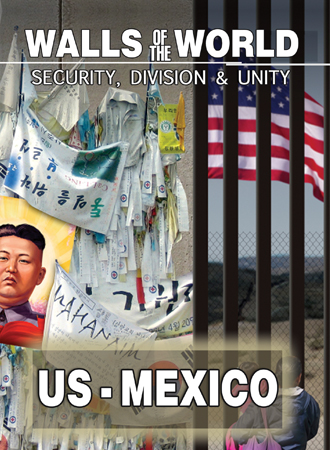
Walls of the World: United States–Mexico Wall 2019
Distributed by Film Ideas, 308 North Wolf Rd., Wheeling, IL 60090; 800-475-3456
Produced by Luned Phillips
Directed by Caryl Ebenezer
Streaming, 52 mins
Middle School - General Adult
Immigration; International Relations; Latin Americans; Political Science; Western United States
Date Entered: 07/07/2020
Reviewed by Kathleen Spring, Nicholson Library, Linfield University, McMinnville, ORThe San Ysidro Land Port of Entry in San Diego, California is one of the busiest land border crossings in the world and serves as a primary point of entry between the United States and Mexico, handling tens of thousands of crossings every day. In Walls of the World: United States–Mexico Wall (part of the six-part series Walls of the World: Security, Division & Unity), we see some of the human impacts from an increased focus on curbing immigration and border security following the 2016 U.S. presidential election.
Incorporating interviews with border patrol officers, immigration historian Dr. S. Deborah Kang, local religious leaders, volunteers with the non-profit organization Humane Borders, and others, Walls of the World: United States–Mexico Wall spends much of its time highlighting the plight of the Cazares family. After living in the U.S. for nearly 30 years, patriarch Gastón Cazares was deported in 2017 because he was undocumented. Gastón’s wife and their children still live in California, and we see the difficulties the teenagers (who are U.S. citizens) face in making the regular trip across the border to spend time with their dad. Footage shot at Friendship Park, the binational park located along the border where separated families visit with each other from opposite sides of the border wall, demonstrates that many individuals face even greater difficulties in seeing their loved ones.
Series director Caryl Ebenezer alternates between letting the interviewees’ own words construct the narrative arc and choosing to add voiceover narration to provide historical and cultural context. The production value throughout is good, although the decision to include English subtitles for segments with a law enforcement officer who speaks English with only a faint accent seems unnecessary. Walls of the World: United States–Mexico Wall is an adequate depiction of the ongoing immigration struggles in the U.S., but it might be seen as slightly more compelling if taken in context with the other films in the series. (The reviewer did not have access to view those segments.) Similar in theme to Crossing Arizona: Where Do You Draw the Line?, this film could be paired with other documentaries on the U.S.-Mexico border region (such as Purgatorio: A Journey into the Heart of the Border) for use in political science, history, sociology, or area studies courses. Public libraries would also likely see interest in this subject from a number of their patrons.
In English and Spanish, with English subtitles.